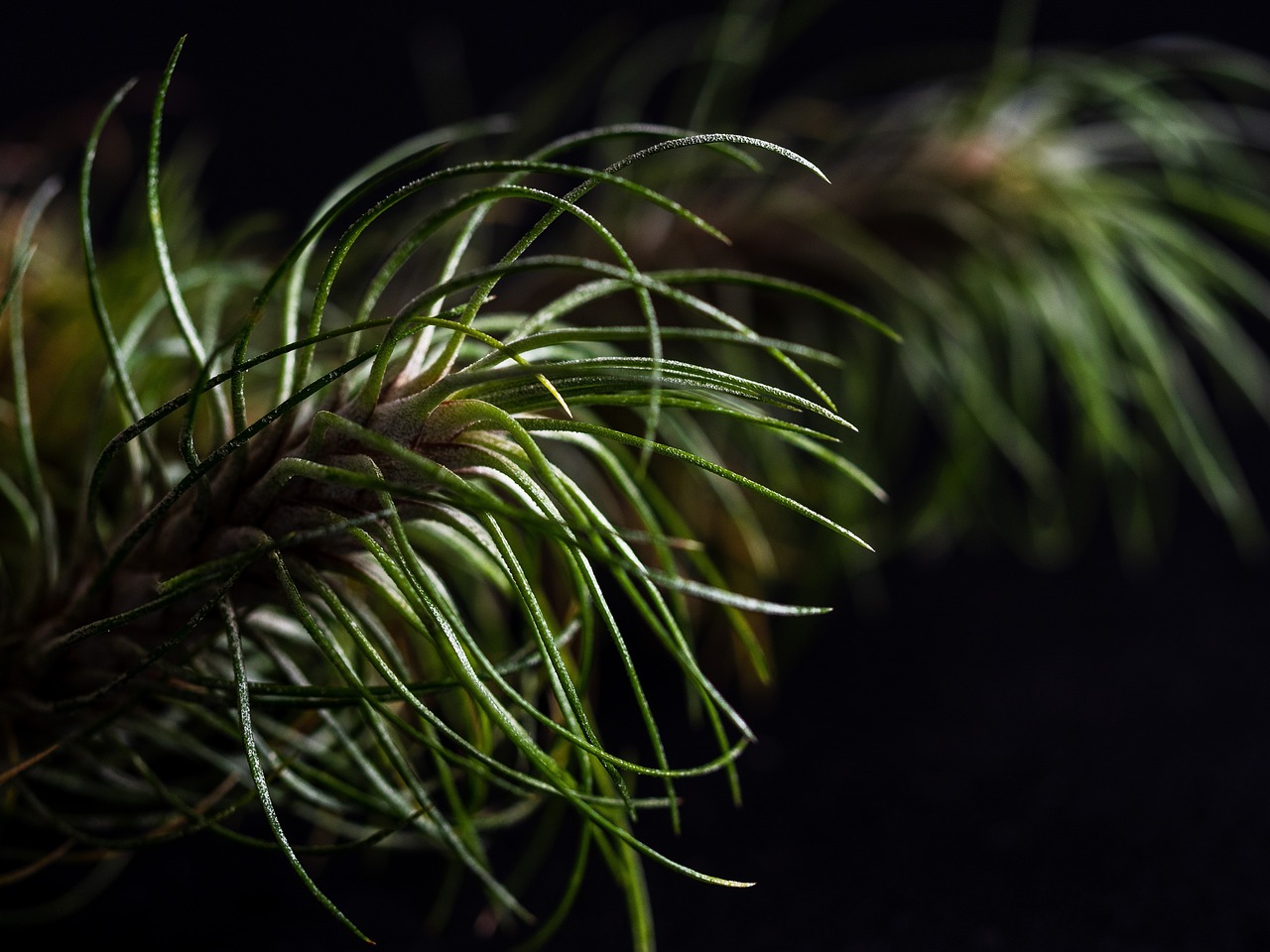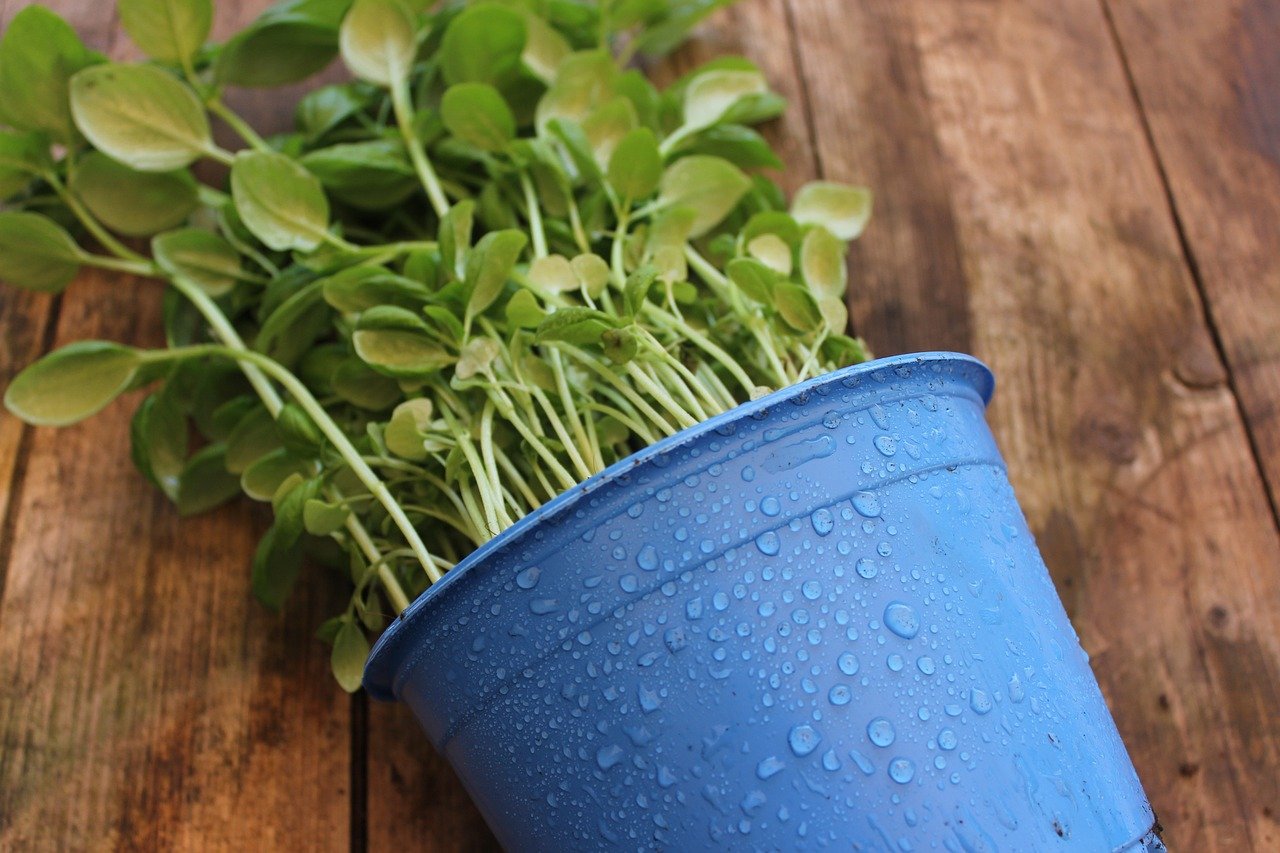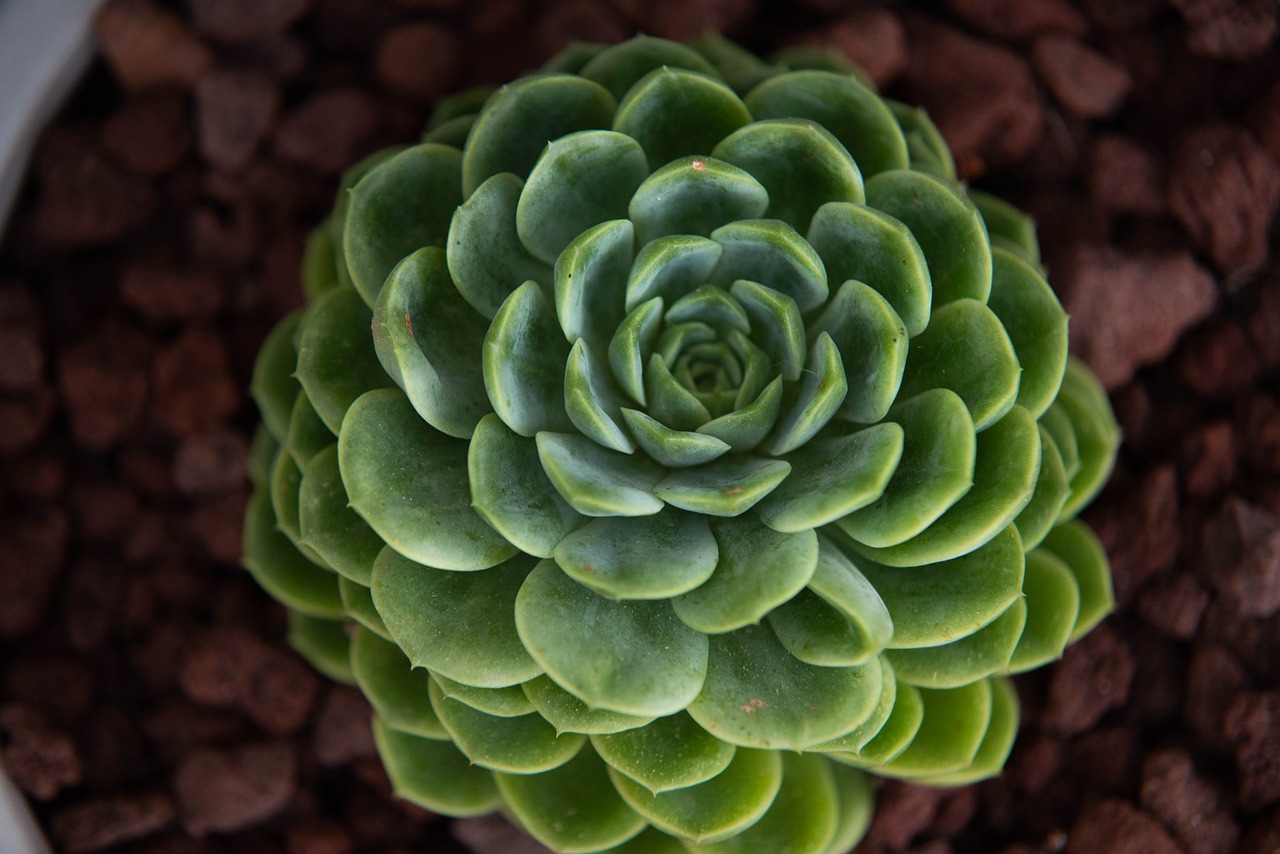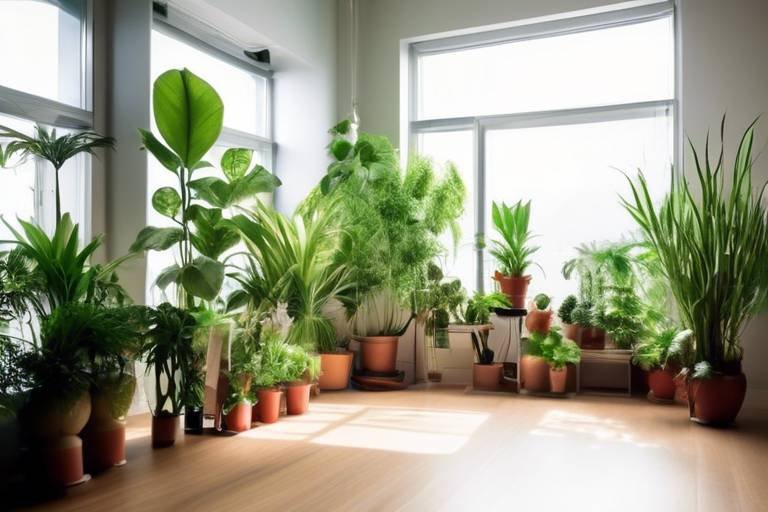How Indoor Plants Improve Air Quality - The Science Explained
Indoor plants are not just beautiful decorations; they are powerful allies in the battle for cleaner air. You might be surprised to learn that these green companions play a significant role in enhancing the quality of the air we breathe. But how exactly do they do this? The answer lies in their unique biological processes, which include photosynthesis, respiration, and the fascinating ability to absorb various pollutants. By understanding the science behind these mechanisms, we can appreciate the vital role indoor plants play in maintaining a healthy living environment.
Let's dive deeper into the world of indoor plants and explore how they contribute to air purification. During photosynthesis, plants take in carbon dioxide and release oxygen, which is essential for our survival. This natural process not only helps to replenish the oxygen levels in our homes but also reduces the concentration of harmful gases. Imagine your indoor space as a mini-ecosystem, where plants act as the lungs, filtering out toxins and providing us with fresh air.
Moreover, while plants are busy photosynthesizing, they are also engaging in respiration. This process involves the uptake of oxygen and the release of carbon dioxide, which is essential for their growth and development. The balance between photosynthesis and respiration is crucial in maintaining a healthy indoor atmosphere. It’s like a dance, where every step counts towards creating a harmonious environment.
But the magic of indoor plants doesn’t stop there. They also possess the remarkable ability to absorb pollutants such as formaldehyde, benzene, and xylene. These substances, often found in household products and building materials, can significantly impact our health if left unchecked. By incorporating specific types of plants into our homes, we can effectively reduce these harmful compounds and improve our overall air quality.
To illustrate this point, let’s take a look at a table that highlights some common indoor plants and the specific pollutants they can help eliminate:
| Plant Name | Pollutants Removed |
|---|---|
| Spider Plant | Formaldehyde, Xylene |
| Peace Lily | Ammonia, Benzene, Formaldehyde |
| Snake Plant | Formaldehyde, Nitrogen Oxides |
| Aloe Vera | Formaldehyde, Benzene |
As you can see, each plant offers unique benefits, making it essential to choose the right ones for your space. This not only enhances the aesthetic appeal of your home but also contributes significantly to your health and well-being.
In summary, indoor plants are more than just a pretty face. They are vital players in the fight for better air quality, utilizing their biological processes to filter out harmful pollutants and enrich our living environments. By understanding how these plants work, we can make informed choices about which species to incorporate into our homes, ultimately leading to a healthier, happier life.
Q: How many indoor plants do I need to improve air quality?
A: The number of plants needed can vary based on the size of your space. Generally, having at least one plant per 100 square feet can make a noticeable difference.
Q: Do all indoor plants purify air equally?
A: No, different plants have varying abilities to filter out specific pollutants. Researching which plants are best suited for your needs is essential.
Q: How do I care for indoor plants to ensure they remain effective air purifiers?
A: Providing adequate light, proper watering, and suitable soil conditions are key to keeping your plants healthy and effective in purifying air.
Q: Can indoor plants help with allergies?
A: Yes, certain plants can help reduce allergens in the air, but it's important to choose species that do not trigger allergies themselves.

The Science Behind Air Quality Improvement
Have you ever wondered how those lovely green plants in your home contribute to a healthier atmosphere? The magic lies in their biological processes, primarily photosynthesis and respiration. These processes work together to not only produce oxygen but also to remove harmful pollutants from the air, making your indoor environment much more pleasant and breathable.
During photosynthesis, plants absorb carbon dioxide (CO2) from the air and, using sunlight, convert it into glucose and oxygen. This oxygen is what we breathe in, and it’s essential for our survival. But that’s not all! Plants also take in various indoor air pollutants, such as formaldehyde and benzene, which can be emitted from common household items like furniture, cleaning products, and even the paint on your walls. By absorbing these toxins, indoor plants effectively act as natural air purifiers, creating a healthier living space.
But how do they manage to filter out these pollutants? It’s a combination of their physical structure and the activity of microorganisms in the soil. The leaves of plants have tiny openings called stomata that allow gases to enter and exit. When these stomata open, they not only release oxygen but also absorb harmful substances. Additionally, the soil around the roots is teeming with beneficial microbes that break down pollutants into less harmful substances, enhancing the plants' ability to purify the air. This process is known as phytoremediation, a term that describes how plants can remove, transfer, and stabilize contaminants from the soil and air.
To illustrate how effective plants can be in improving air quality, consider the following table that highlights some common indoor air pollutants and the corresponding plant species that can help mitigate them:
| Indoor Air Pollutant | Common Sources | Effective Plant Species |
|---|---|---|
| Formaldehyde | Furniture, carpets, and certain cleaning products | Spider Plant, Peace Lily |
| Benzene | Paint, plastics, and tobacco smoke | Peace Lily, Bamboo Palm |
| Xylene | Paint, varnishes, and vehicle exhaust | Spider Plant, Rubber Plant |
In summary, the science behind air quality improvement through indoor plants is a fascinating interplay of biological processes and environmental interactions. Not only do these plants enhance the aesthetic appeal of your home, but they also play a crucial role in creating a healthier indoor environment. By understanding how they work, you can better appreciate the importance of incorporating plants into your living spaces.

Top Indoor Plants for Air Purification
When it comes to enhancing the quality of air in our homes, certain indoor plants stand out as champions of purification. These green companions not only beautify our spaces but also act as natural air filters, absorbing toxins and releasing oxygen. The benefits they provide go beyond aesthetics; they contribute significantly to our overall health and well-being. Imagine walking into a room filled with lush greenery, where the air feels fresher and cleaner—sounds inviting, right? Let's explore some of the top indoor plants that can help you achieve an improved indoor atmosphere.
One of the most popular choices is the Spider Plant. This resilient plant is known for its remarkable ability to eliminate harmful substances such as formaldehyde and xylene from the air. Its long, arching leaves add a touch of elegance to any room, and the best part? It's incredibly easy to care for! Spider plants thrive in indirect sunlight and can tolerate occasional neglect, making them perfect for busy individuals or those new to gardening.
Next up is the Peace Lily, a stunning plant that not only enhances your interior decor but also excels at filtering indoor air pollutants like ammonia, benzene, and formaldehyde. The Peace Lily's glossy green leaves and delicate white flowers create a serene ambiance, making it a favorite among plant enthusiasts. Just be mindful of its watering needs; it prefers consistently moist soil but can droop dramatically to let you know when it's thirsty.
Another noteworthy contender is the Snake Plant, also known as Mother-in-Law's Tongue. This hardy plant is famous for its air-purifying qualities and can thrive in low light conditions. It’s particularly effective at converting carbon dioxide into oxygen at night, making it a fantastic addition to your bedroom. Plus, with its sharp, upright leaves, it adds a modern touch to any space.
For those looking for a touch of tropical flair, consider the Rubber Plant. With its large, glossy leaves, this beauty not only enhances your decor but also helps remove toxins like formaldehyde from the air. Rubber plants are relatively easy to care for, requiring bright, indirect sunlight and occasional watering. Their striking appearance makes them a show-stopper in any room.
To help you make informed choices, here’s a quick comparison of these top indoor plants:
| Plant Name | Air Purification Benefits | Care Requirements |
|---|---|---|
| Spider Plant | Removes formaldehyde and xylene | Indirect sunlight, occasional watering |
| Peace Lily | Filters ammonia, benzene, and formaldehyde | Moist soil, indirect sunlight |
| Snake Plant | Converts CO2 to O2 at night | Low light, minimal watering |
| Rubber Plant | Removes formaldehyde | Bright, indirect sunlight, moderate watering |
Incorporating these plants into your home is not just about aesthetics; it’s a step towards creating a healthier living environment. By choosing the right plants and understanding their care requirements, you can enjoy the dual benefits of improved air quality and a more vibrant home. So, why not start your indoor garden today? Your lungs will thank you!
Q: How many indoor plants do I need to purify the air effectively?
A: Generally, having at least one plant per 100 square feet is recommended for optimal air purification.
Q: Can I keep indoor plants in low-light conditions?
A: Yes, many indoor plants, like the Snake Plant and Peace Lily, thrive in low-light environments, making them suitable for various spaces.
Q: How often should I water my indoor plants?
A: Watering frequency varies by plant type. It's essential to check the soil moisture before watering; most plants prefer to dry out slightly between waterings.

Spider Plant
The (Chlorophytum comosum) is a true champion when it comes to improving indoor air quality. Known for its striking green and white striped leaves, this plant is not just a pretty face; it’s a powerhouse of air purification. One of the most fascinating aspects of the spider plant is its ability to absorb harmful substances like formaldehyde and xylene, which are commonly found in household items such as cleaning products, furniture, and even some types of flooring. Imagine having a green ally in your corner, tirelessly working to keep your air clean and fresh!
What makes the spider plant so appealing, especially for those new to plant care, is its resilience. This plant can thrive in a variety of conditions, making it an excellent choice for anyone looking to enhance their living space without the stress of high maintenance. It can flourish in indirect sunlight, which means you don’t need to have a sunroom or a bright window to keep it happy. Just place it on a shelf or table where it can receive some light, and you’re good to go!
However, like any living thing, spider plants do require some attention. They prefer well-draining soil and should be watered occasionally, allowing the soil to dry out between waterings. Overwatering can lead to root rot, which is one of the common issues that can plague these otherwise hardy plants. To help you keep track of their needs, here’s a quick overview:
| Care Aspect | Recommendation |
|---|---|
| Light | Indirect sunlight |
| Watering | Allow soil to dry out between waterings |
| Soil | Well-draining potting mix |
Despite their hardiness, spider plants can still face some challenges. One common issue is the appearance of brown tips on the leaves, which can indicate underwatering or low humidity. If you notice this, don’t panic! Adjust your watering routine and consider misting your plant or placing a humidifier nearby. Another potential problem is root rot, which can occur if the plant is overwatered or if the soil doesn’t drain well. Keeping an eye on the moisture level is crucial for maintaining a healthy spider plant.
In summary, the spider plant is a fantastic addition to any home, not only for its aesthetic appeal but also for its remarkable ability to purify the air. With just a little care, you can enjoy the numerous benefits it offers, making your indoor environment healthier and more vibrant. So why not bring one home today and let it work its magic?

Care Tips for Spider Plants
Taking care of your spider plants is easier than you might think! These resilient little green friends thrive in a variety of conditions, making them perfect for both novice and experienced plant parents alike. To ensure your spider plants remain healthy and effective air purifiers, you'll want to pay attention to a few key care tips.
First and foremost, spider plants prefer indirect sunlight. This means they should be placed in a spot where they can receive bright, filtered light but are shielded from harsh direct rays. Too much direct sunlight can scorch their leaves, leading to unsightly brown tips. If you notice your spider plant stretching towards the light, it might be a sign that it needs a brighter location.
Next up is watering. Spider plants enjoy a good drink, but they’re also quite forgiving if you forget to water them occasionally. It’s best to allow the top inch of soil to dry out between waterings. Overwatering can lead to root rot, which is a common issue for many indoor plants. To avoid this, ensure that your plant is in a pot with drainage holes to allow excess water to escape.
Speaking of soil, using a well-draining potting mix is crucial for the health of your spider plant. A mix that retains some moisture while allowing excess water to drain will create the perfect environment for your plant's roots to thrive. You might also consider repotting your spider plant every couple of years to refresh the soil and give it more room to grow.
Another important aspect of spider plant care is humidity. These plants enjoy a bit of humidity, so if you live in a particularly dry climate, you might want to mist your spider plant occasionally or place it near a humidifier. However, they are quite adaptable and can tolerate lower humidity levels as well.
Lastly, keep an eye out for pests. While spider plants are generally resistant to pests, they can sometimes attract spider mites or aphids. If you notice any signs of infestation, such as webbing or small insects on the leaves, a gentle wash with soap and water can help eliminate them. Regularly inspecting your plant will help you catch any issues early and keep it looking its best.
In summary, with the right care, your spider plant can flourish and continue to purify the air in your home. Remember to provide indirect sunlight, water appropriately, use well-draining soil, maintain humidity levels, and keep an eye out for pests. By following these simple tips, you'll have a thriving spider plant that not only beautifies your space but also contributes to a healthier indoor environment.
- How often should I water my spider plant? It's best to water when the top inch of soil is dry, typically every 1-2 weeks.
- Can spider plants survive in low light? Yes, they can adapt to lower light conditions, but they thrive best in bright, indirect sunlight.
- What should I do if my spider plant's leaves turn brown? Brown tips usually indicate either too much direct sunlight or inconsistent watering.
- How can I propagate my spider plant? You can propagate spider plants by planting the baby "pups" that grow from the mother plant.

Common Issues with Spider Plants
Even though spider plants are known for their resilience and adaptability, they can still encounter a few common issues that might hinder their air-purifying abilities. One of the most prevalent problems is the appearance of brown tips on the leaves. This can be caused by several factors, including inconsistent watering, low humidity, or exposure to direct sunlight. If you notice these unsightly brown tips, it’s crucial to assess your plant's environment and care routine. For instance, spider plants thrive in indirect sunlight and prefer a humid atmosphere. If your home is particularly dry, consider misting the leaves occasionally or using a humidity tray to create a more suitable climate.
Another common issue is root rot, which occurs when the plant is overwatered or planted in poorly draining soil. Spider plants prefer to be kept slightly moist, but allowing the roots to sit in water can lead to decay. To prevent root rot, ensure that your spider plant is in a pot with drainage holes and that you allow the top inch of soil to dry out before watering again. If you suspect root rot, you might need to repot the plant, trimming away any damaged roots and replacing the soil with a fresh, well-draining mix.
In addition to these issues, spider plants can also attract pests like spider mites and aphids. These tiny intruders can cause damage by sucking the sap from the leaves, leading to yellowing and wilting. Regularly inspecting your plant and wiping the leaves with a damp cloth can help keep these pests at bay. If an infestation does occur, a gentle insecticidal soap can usually do the trick, restoring your spider plant to its former glory.
In summary, while spider plants are relatively easy to care for, being aware of these common issues can help you maintain their health and air-purifying capabilities. By addressing problems like brown tips, root rot, and pest infestations promptly, you can ensure that your spider plant continues to thrive and contribute positively to your indoor air quality.
- How often should I water my spider plant? It's best to water your spider plant when the top inch of soil feels dry. This usually means watering every 1-2 weeks, depending on the humidity and temperature of your home.
- Can spider plants grow in low light? While spider plants prefer bright, indirect light, they can tolerate low-light conditions. However, their growth may slow down, and they might not produce as many offshoots.
- What should I do if my spider plant starts to look droopy? Droopy leaves can indicate either overwatering or underwatering. Check the soil moisture; if it’s soggy, reduce your watering frequency. If it’s dry, give your plant a good drink.

Peace Lily
The is a stunning addition to any indoor space, not just for its aesthetic appeal but also for its remarkable ability to purify the air. Often recognized by its glossy green leaves and elegant white flowers, this plant is more than just a pretty face. It excels at filtering out common indoor air pollutants such as ammonia, benzene, and formaldehyde, making it a champion in the indoor gardening world. If you’re looking to create a healthier living environment, the Peace Lily should be on your shortlist.
One of the reasons the Peace Lily is so effective at improving air quality is its unique biological processes. The plant absorbs these harmful substances through its leaves, which then transport the toxins down to the roots. Here, beneficial microbes in the soil break down the pollutants, allowing the plant to release clean oxygen back into the air. This cycle not only contributes to a fresher atmosphere but also promotes a sense of well-being in your home.
In terms of care, the Peace Lily is relatively low-maintenance, making it suitable for both seasoned plant enthusiasts and beginners. It thrives in low to medium light, which means you don't need to place it in direct sunlight. In fact, too much direct light can harm its leaves. Watering is also simple; just keep the soil moist but not soggy, and the plant will reward you with beautiful blooms. However, be cautious—overwatering can lead to root rot, so it's essential to find that perfect balance.
Moreover, the Peace Lily has an interesting feature: it can actually signal when it needs water. When the leaves start to droop, it's a clear sign that it’s time for a drink. This characteristic makes it easier for plant owners to gauge their plant's needs without constantly checking the soil moisture.
Despite its hardiness, the Peace Lily can face some common issues. For instance, if you notice brown tips on the leaves, it may indicate that the plant is receiving too much direct sunlight or not enough humidity. Additionally, yellowing leaves can be a sign of overwatering. By keeping an eye on these symptoms, you can ensure your Peace Lily remains healthy and effective in purifying your indoor air.
In summary, the Peace Lily is not just an attractive houseplant; it plays a vital role in enhancing air quality. Its ability to filter harmful pollutants, combined with its low-maintenance care requirements, makes it a perfect choice for anyone looking to improve their indoor environment. So why not bring a Peace Lily into your home today and enjoy cleaner, fresher air while adding a touch of elegance to your decor?

How Plants Filter Air Pollutants
Indoor plants are not just decorative elements in our homes; they play a crucial role in improving air quality through a variety of fascinating mechanisms. One of the primary methods by which plants filter air pollutants is through a process known as phytoremediation. This term refers to the ability of plants to absorb, accumulate, and detoxify harmful substances from the air and soil. Imagine plants as nature’s little air purifiers, working tirelessly to keep our indoor environments clean and healthy.
When we breathe, we inadvertently introduce various pollutants into our living spaces, including volatile organic compounds (VOCs) like formaldehyde, benzene, and ammonia. These substances can originate from everyday items such as furniture, cleaning products, and even paint. Plants combat these toxins through their leaves and roots by absorbing these harmful chemicals and converting them into less harmful substances. For instance, a plant might take in formaldehyde and use it during photosynthesis, breaking it down into harmless compounds. Isn't that incredible?
Moreover, the process of photosynthesis plays a vital role in this air purification process. During photosynthesis, plants take in carbon dioxide (CO₂) and release oxygen (O₂), creating a balanced atmosphere. This exchange not only improves air quality but also contributes to our overall well-being. The more oxygen we have in our environment, the better we feel, both physically and mentally.
But the magic doesn’t stop there! The soil surrounding plant roots is teeming with beneficial microorganisms. These tiny helpers enhance the air purification process through their own unique contributions. They break down pollutants, making it easier for plants to absorb them. It's like having a team of microscopic workers dedicated to cleaning up our indoor air! The combination of plant processes and microbial activity creates a powerful synergy that significantly enhances air quality.
To illustrate how effective plants can be in filtering air pollutants, consider the following table that highlights some common indoor air pollutants and how specific plants can help mitigate their effects:
| Pollutant | Plant Type | Mechanism |
|---|---|---|
| Formaldehyde | Spider Plant | Absorption through leaves |
| Benzene | Peace Lily | Root uptake and conversion |
| Ammonia | Boston Fern | Microbial breakdown in soil |
In conclusion, the ability of indoor plants to filter air pollutants is a remarkable natural process that provides us with cleaner, healthier air. By incorporating these green allies into our homes, we not only enhance the aesthetic appeal of our spaces but also create a more inviting and health-promoting environment. So next time you consider adding a plant to your home, remember that you are not just beautifying your space; you are also investing in your health!

Photosynthesis and Respiration
When we think about indoor plants, we often picture vibrant greens and beautiful flowers, but there’s so much more happening beneath the surface. The processes of photosynthesis and respiration are at the heart of how these plants contribute to a healthier indoor environment. Essentially, photosynthesis is the magic trick that plants perform to convert sunlight into energy. During this process, plants take in carbon dioxide (CO2) from the air and, using sunlight, transform it into glucose—a type of sugar that fuels their growth.
But that’s not all! As a byproduct of photosynthesis, plants release oxygen (O2) back into the atmosphere. This is where the magic really happens for us humans. Imagine being in a room filled with plants; not only are they beautifying your space, but they are also replenishing the air with fresh oxygen, making it easier for you to breathe. It’s like having a natural air purifier right in your living room!
On the flip side, we have respiration, which is the process that occurs both day and night. While photosynthesis only happens when there’s light, respiration is a constant activity. During respiration, plants take in oxygen and release carbon dioxide. This might sound counterproductive, but it’s essential for the plant's survival. Think of it as a cycle where plants are constantly balancing their own needs with the needs of their environment. Here’s a simplified breakdown:
| Process | What Happens | Key Outcomes |
|---|---|---|
| Photosynthesis | Plants absorb sunlight, CO2, and water | Produces glucose and releases O2 |
| Respiration | Plants take in O2 and convert glucose | Produces energy and releases CO2 |
This delicate balance between photosynthesis and respiration is crucial for maintaining a healthy indoor atmosphere. It’s like a dance where each step is important for the overall performance. The more plants you have, the more oxygen they produce during the day, and the more they help reduce carbon dioxide levels at night. So, when you’re considering adding some greenery to your home, remember that you’re not just decorating; you’re actively participating in a cycle that benefits both you and your leafy friends.
In summary, understanding these processes gives us insight into why indoor plants are so effective at improving air quality. They’re not just pretty faces; they’re hardworking little machines that are continuously working to create a balanced environment. So next time you take a deep breath and feel refreshed, thank the plants around you for their silent yet powerful contributions!
- How many plants do I need to improve air quality? It varies, but generally, having one plant per 100 square feet of space is a good rule of thumb.
- Can all indoor plants purify air? While many plants can help, some are more effective than others. Look for plants like the spider plant or peace lily for the best results.
- Do plants really improve mood? Yes! Studies show that having greenery in your home can reduce stress and improve overall well-being.

Microbial Activity in Soil
The soil surrounding plant roots is not just a passive medium; it's a bustling ecosystem teeming with life. This microscopic community plays a pivotal role in enhancing air quality through a process known as phytoremediation. Beneficial microbes, including bacteria and fungi, work synergistically with plants to break down pollutants and improve overall air quality. When you think about it, it's like having a tiny army of helpers that are constantly on duty to keep your indoor environment clean and healthy.
These microorganisms contribute to air purification in several ways. For starters, they assist in the decomposition of organic matter, which releases nutrients that plants can absorb. This nutrient exchange is crucial for plant health and boosts their ability to filter toxins from the air. Additionally, these microbes can metabolize harmful substances, transforming them into harmless byproducts. It's fascinating to consider that while you’re enjoying your beautiful indoor plants, there’s a whole world of beneficial microbes working tirelessly beneath the soil surface.
Moreover, the interactions between plants and soil microbes create a dynamic feedback loop. As plants absorb carbon dioxide during photosynthesis, they release organic compounds through their roots, which serve as food for soil microbes. In return, these microbes enhance the plant’s nutrient uptake and improve its resilience against diseases. This relationship is not just beneficial for the plants; it’s a win-win situation that contributes significantly to improving indoor air quality.
To illustrate the importance of microbial activity, consider the following table that highlights some of the key microbes found in soil and their roles in air purification:
| Microbe Type | Role in Air Purification |
|---|---|
| Bacteria | Decompose organic matter and convert pollutants into harmless substances. |
| Fungi | Form symbiotic relationships with plant roots, enhancing nutrient absorption and breaking down toxic compounds. |
| Actinomycetes | Help in the decomposition of complex organic materials, further purifying the air. |
In conclusion, the microbial activity in soil is a critical component of the air purification process that indoor plants engage in. By fostering a healthy soil environment, you not only support your plants’ growth but also enhance their ability to cleanse the air around you. So, the next time you water your indoor plants, remember that you’re not just nurturing them; you’re also nurturing a vibrant community of microorganisms that contribute to a healthier living space.
- What types of microbes are most beneficial for indoor plants?
Beneficial bacteria, fungi, and actinomycetes are among the most important microbes that help improve soil health and air purification.
- How can I promote microbial activity in my plant soil?
To promote microbial activity, ensure that your plants are watered appropriately, avoid over-fertilizing, and consider adding organic matter like compost.
- Do all indoor plants benefit from microbial activity?
Yes, all indoor plants can benefit from a healthy microbial community in the soil, which aids in nutrient uptake and pollutant breakdown.

Benefits of Improved Air Quality
Improving air quality indoors is not just a luxury; it's a necessity for fostering a healthy living environment. When you breathe cleaner air, you're not just filling your lungs; you're enhancing your overall well-being. Numerous studies have shown that better air quality can lead to a myriad of health benefits. For instance, people often experience reduced respiratory issues, which can range from minor irritations like coughing and sneezing to more serious conditions such as asthma and chronic bronchitis. Imagine your lungs feeling lighter, as if they've been freed from a heavy weight. That’s the kind of transformation cleaner air can bring!
Moreover, improved air quality can significantly boost your mood and mental clarity. Have you ever noticed how a breath of fresh air can lift your spirits? This is because clean air can enhance oxygen flow to your brain, resulting in increased cognitive function and a more positive outlook on life. It’s like giving your brain a refreshing drink of water after a long, dry spell. Additionally, with better air quality, you may find yourself feeling less fatigued and more energized throughout the day, allowing you to tackle tasks with renewed vigor.
Another crucial aspect is the impact of clean air on productivity. In workplaces where air quality is compromised, employees often report lower efficiency and higher levels of absenteeism. By incorporating indoor plants, not only can you beautify your space, but you can also create an atmosphere that encourages focus and creativity. Think of your workspace as a garden; with the right plants, you can cultivate a thriving environment that nurtures both personal and professional growth.
In addition to these benefits, cleaner air can also lead to better sleep quality. Many people underestimate the importance of air quality in their bedrooms. Pollutants can disrupt your sleep cycle, leading to restless nights and groggy mornings. By ensuring your sleeping environment is filled with purifying plants, you can create a sanctuary that promotes restful sleep, allowing you to wake up refreshed and ready to take on the day.
Here’s a quick overview of some of the benefits of improved air quality:
| Benefit | Description |
|---|---|
| Reduced Respiratory Issues | Cleaner air leads to fewer allergies and respiratory problems. |
| Enhanced Mood | Improved air quality can elevate your spirits and mental clarity. |
| Increased Productivity | Better air quality fosters focus and efficiency in work environments. |
| Better Sleep Quality | Cleaner air supports restful sleep, improving overall health. |
In conclusion, the benefits of improved air quality are extensive and impactful. By simply incorporating indoor plants into your living space, you can create a healthier, happier, and more productive environment. So why wait? Start your journey towards better air quality today!
- How many plants do I need for effective air purification? A few strategically placed plants can significantly improve indoor air quality. Aim for at least one plant per 100 square feet.
- Can all indoor plants purify air? Not all plants are equally effective at purifying air. Research specific species known for their air-purifying qualities, such as the spider plant and peace lily.
- Do indoor plants require special care for air purification? While most indoor plants are fairly low-maintenance, ensuring they receive the right amount of light and water is crucial for their air-purifying capabilities.

Practical Tips for Incorporating Indoor Plants
Bringing indoor plants into your living space is not just about aesthetics; it’s about creating a healthier environment. However, it can be overwhelming to know where to start. The good news is that incorporating plants into your home can be both simple and enjoyable. First, consider the lighting conditions in your space. Different plants have different light requirements. For instance, some thrive in bright, direct sunlight, while others prefer low light. Understanding these needs will help you choose the right plants for each room.
Next, think about the size and scale of the plants you want to incorporate. Large plants can serve as stunning focal points, while smaller ones can fit neatly on shelves or desks. A good rule of thumb is to select plants that complement the scale of your furniture and room size. For example, a tall fiddle leaf fig tree can elevate the atmosphere of a spacious living room, whereas a petite succulent can add charm to a small desk.
When it comes to positioning your plants, consider their growth habits. Some plants, like the spider plant, will cascade beautifully over the edges of shelves, while others, like the peace lily, benefit from being placed on a table where their blooms can be admired. Additionally, be mindful of air circulation. Plants need good airflow to thrive, so avoid overcrowding them in one corner. Instead, distribute them throughout your home to create a harmonious and balanced atmosphere.
Watering is another critical aspect of plant care. Each plant has its own requirements, and over-watering is a common mistake that can lead to root rot. A simple way to track this is to use a moisture meter or simply stick your finger into the soil to check for dampness. Remember, it’s better to underwater than overwater. For those who travel frequently or have busy schedules, consider plants that require less maintenance, such as snake plants or pothos, which can tolerate neglect.
To maximize the air-purifying benefits of your plants, you might want to group them together. This not only creates a lush, green aesthetic but also enhances their ability to filter air. When plants are in proximity, they can create a microclimate that helps maintain humidity levels and improve air quality even further. Just imagine a cozy corner filled with various plants; it’s not only pleasing to the eye but also a sanctuary for your lungs!
Finally, don’t forget about regular maintenance. Dust can accumulate on leaves, blocking sunlight and reducing the plant's ability to photosynthesize. A gentle wipe with a damp cloth can keep your plants looking their best and performing optimally. Additionally, consider rotating your plants occasionally to ensure they grow evenly and receive adequate light from all angles.
Q: How many indoor plants should I have in my home?
A: There’s no one-size-fits-all answer, but a good rule of thumb is to have at least one plant per room, especially in areas where you spend a lot of time.
Q: What are the best indoor plants for beginners?
A: Some great options for beginners include spider plants, pothos, and snake plants, as they are low-maintenance and resilient.
Q: Can indoor plants really improve air quality?
A: Yes! Indoor plants can absorb toxins and release oxygen, contributing to a healthier indoor environment.
Q: How do I know if my plant is getting enough light?
A: If your plant is stretching toward the light or its leaves are turning yellow, it may need more light. Conversely, if the leaves are scorched or browning, it may be getting too much direct sunlight.
Frequently Asked Questions
- How do indoor plants improve air quality?
Indoor plants improve air quality through a process called photosynthesis, where they absorb carbon dioxide and release oxygen. Additionally, they can filter out harmful pollutants like formaldehyde and benzene, making the air healthier to breathe.
- What are the best indoor plants for air purification?
Some of the best indoor plants for air purification include the Spider Plant, Peace Lily, and Snake Plant. These plants are known for their ability to filter out toxins and improve overall air quality while being relatively easy to care for.
- Do indoor plants require special care?
While most indoor plants are low-maintenance, they do have specific care requirements. For example, Spider Plants thrive in indirect sunlight and need occasional watering. It's essential to understand the needs of each plant type to ensure they remain healthy and effective air purifiers.
- Can indoor plants help with allergies?
Yes! Indoor plants can help reduce allergens in the air by filtering out dust, pollen, and other airborne particles. This can lead to a more comfortable living environment, particularly for those with allergies or respiratory issues.
- How many plants do I need to improve air quality?
The number of plants you need can vary based on the size of your space and the specific plants you choose. A good rule of thumb is to have at least one plant per 100 square feet to make a noticeable difference in air quality.
- Are there any indoor plants that are toxic to pets?
Yes, some indoor plants can be toxic to pets. For example, Peace Lilies and certain types of Philodendrons can cause gastrointestinal upset in cats and dogs. If you have pets, it's crucial to research plant safety before bringing them home.
- How do I know if my plants are healthy?
Healthy indoor plants typically have vibrant green leaves, no signs of wilting, and a robust root system. If you notice yellowing leaves, stunted growth, or brown tips, it may indicate issues like overwatering or insufficient light.
- What are the benefits of improved air quality?
Improved air quality can lead to numerous health benefits, such as reduced respiratory problems, enhanced mood, and increased productivity. Cleaner air can also contribute to better sleep and overall well-being, making your home a more pleasant place to be.
- Can I use indoor plants in every room?
Absolutely! Indoor plants can be used in almost any room, including bedrooms, living rooms, and even kitchens. Just be mindful of the light conditions and temperature in each space to choose the right plants for optimal health benefits.



















